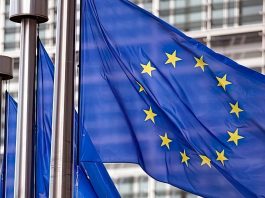The US Court of Appeals for the Federal Circuit reiterated that a patent challenger did not have Article III appellate standing to obtain review of a final Patent Trial & Appeal Board (PTAB) ruling because the underlying district court proceedings had been dismissed with prejudice after the parties reached a settlement and license agreement. Apple Inc. v. Qualcomm Inc., Case Nos. 20-1683; -1763; -1764; -1827 (Fed. Cir. Nov. 10, 2021) (Prost, J.) (Newman, J., dissenting).
This is the second dispute between Apple and Qualcomm to reach the Federal Circuit. In the first appeal (Apple I), the Court found that Apple did not have standing to maintain an appeal from the PTAB because the parties had entered into a settlement agreement.
As in the earlier case, here Qualcomm asserted patent infringement in district court, and Apple filed petitions for inter partes review of the patent claims that Qualcomm asserted Apple had infringed. The PTAB instituted on four petitions. While the inter partes review proceedings were pending, the parties settled the district court litigation, whereby Apple received a license in exchange for royalty payments to Qualcomm. The parties filed a joint motion to dismiss Qualcomm’s district court action with prejudice, which the district court granted. Ultimately, the PTAB found that Apple failed to prove that the challenged claims were unpatentable. Apple appealed.
As in Apple I, Qualcomm moved to dismiss the appeal for lack of standing. Apple responded by arguing that “[a]lthough Apple continues to disagree with [Apple I], in light of that decision and the . . . order denying Apple’s petition for rehearing en banc, Apple believes that the present appeal can be resolved on the briefs without the need for oral argument.” The parties filed a joint motion to vacate oral argument, but the Federal Circuit instead held a consolidated oral argument. Apple reiterated its disagreement with the Court’s ruling in Apple I but admitted that the operative facts in this appeal were “the same.” The Court found that other than the specific difference of the patents in issue themselves, the operative facts were the same and the alleged failure of proof as to certain patent claims (regarding whether the petitioner had established them to be unpatentable) were the same. The Court further found that any specific patent differences were irrelevant since the settlement and license agreements in each case covered the patents in issue in that case.
Apple raised a “nuance” not “specifically addressed” in Apple I, namely that Apple I “did not explain why the threat of liability, if Apple ceases the ongoing payment and the agreement is terminated, is not a sufficient injury to support standing.” The Federal Circuit was not convinced that this nuance merited a different treatment because:
- The Court would need to sit en banc to change Apple I, and panels of the Court are bound by stare decisis.
- Apple acknowledged that this “nuance” was at the core of its denied en banc petition in Apple I.
Accordingly, the Court dismissed the appeal for lack of standing.
Judge Pauline Newman dissented, citing to the differing patents’ technologies and acknowledging Apple’s alleged “concrete present harm by having to pay royalties to be free from a patent it believes to be invalid.” Judge Newman further noted that the existence of a license agreement between the parties did not divest the Federal Circuit of its statutory jurisdiction to receive appeals of PTAB decisions. She explained that precedent is clear that a patent licensee may challenge the patent’s validity in federal court without loss of Article III standing. Judge Newman also noted that the license was only for a term of six years—not for the longer life of the patents at issue—and that Qualcomm had refused Apple’s request for licenses for the duration of the patents’ lifespan. Thus, Judge Newman agreed with Apple that there was a continuing controversy about validity of the licensed patents and that denial of standing to appeal the PTAB’s decisions subjected Apple not only to continuing royalty obligations, but also to the risk of estoppel in any district court proceedings after the license terminated.
Judge Newman would have found statutory authorization for Apple’s appeal under 35 U.S.C. § 329 and § 141 and statutory estoppel under 35 U.S.C. § 325(e). She also would have found that the America Invents Act (AIA) does not abrogate a licensee’s right to always have standing to challenge validity of the licensed patent (from the 1969 Supreme Court decision in Lear, Inc. v. Adkins overturning licensee estoppel). Rather, Judge Newman noted that the AIA ensures that PTAB decisions are appealable to the Federal Circuit.
[View source.]



